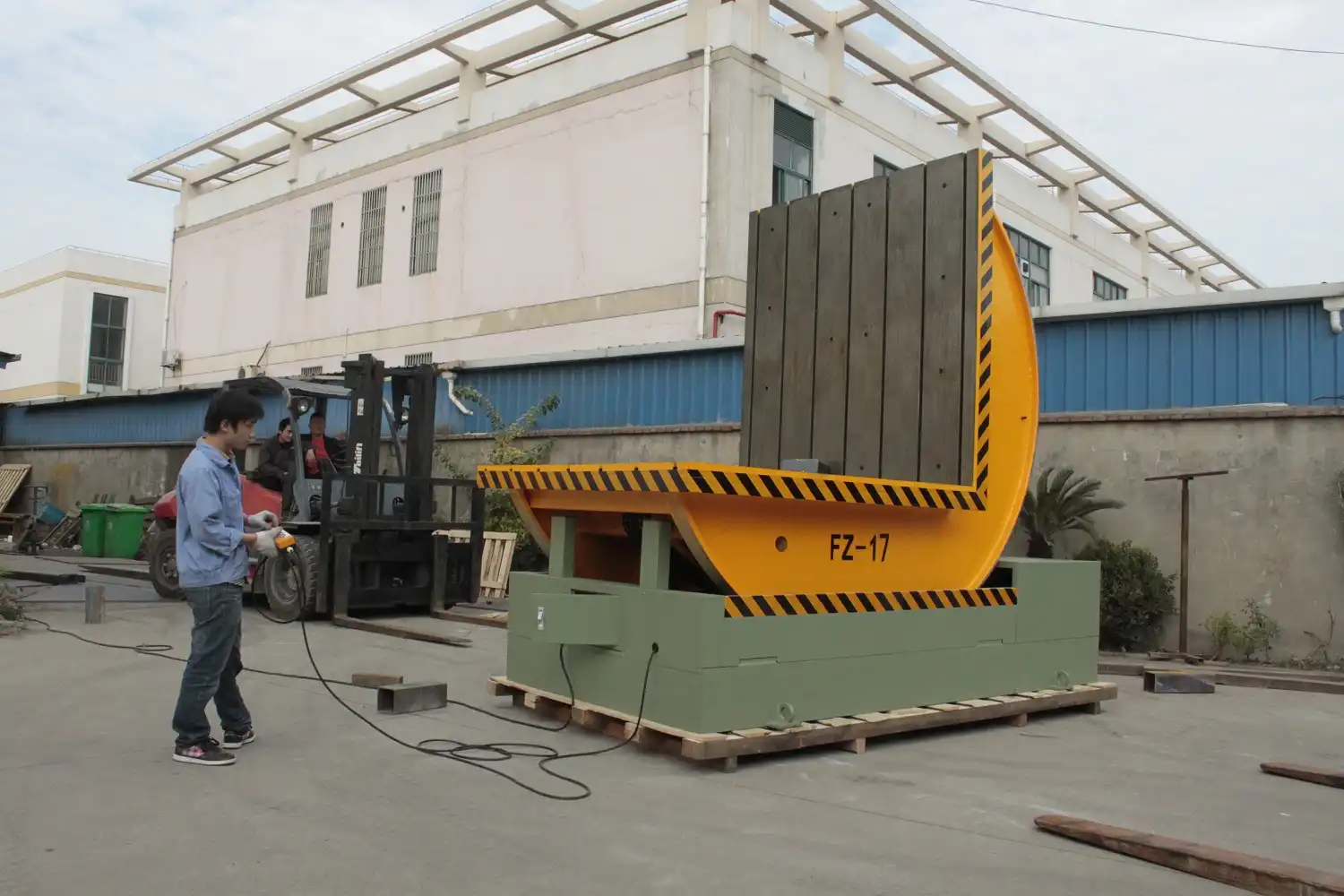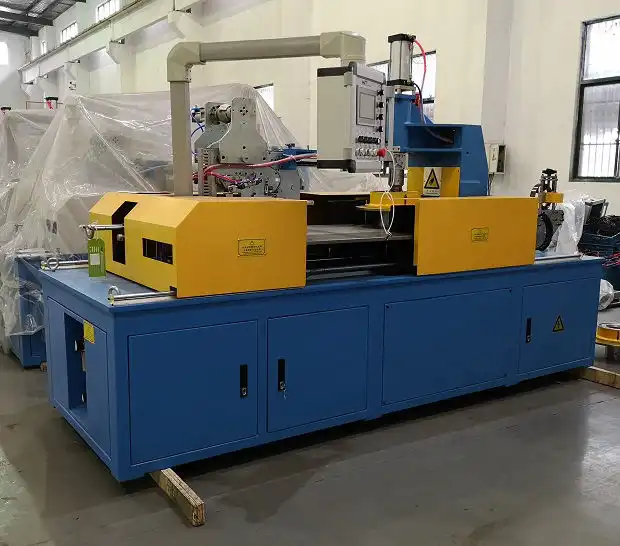Struggling with cumbersome mold flipping operations? Meet the mold flipping machine. It revolutionizes operations by turning molds effortlessly, saving time and reducing injuries. Feel secure, knowing you’re equipped with the best in safety technology. Say goodbye to manual strain and hello to efficiency and precision in your industrial settings.

To operate a mold flipping machine safely, start by adhering to manufacturer instructions, ensuring all safety features are in place. Conduct pre-operation inspections to identify potential hazards. Maintain a clear work area and train operators on safe practices. Regular maintenance ensures equipment reliability. By following these safety protocols, you minimize risks and enhance operational efficiency.
For years, I’ve navigated the complexities of industrial environments. Introducing a mold flipping machine was a game-changer. Initial safety concerns are natural, but with the right procedures, these machines prove indispensable. Let’s delve deeper into what ensures a safe and efficient operation, highlighting my experiences and actionable insights.
1. What are the essential safety protocols for operating a mold flipping machine?
In industries where mold flipping is crucial, safety often hangs in the balance. Ignoring this can lead to costly errors. That’s where safe mold handling equipment comes into play—optimizing operations while keeping risks at bay. Investing in safety ensures not only compliance but also peace of mind.
Adhering to essential safety protocols for a mold flipping machine begins with thorough training and knowledge of the equipment. Operators must inspect machines before use, ensuring no mechanical flaws. While in operation, maintaining a clear zone around the machine is vital. Finally, routine maintenance checks secure long-term safety and functionality, minimizing unexpected failures.

Safety First: A Deeper Insight Into Protocols
Delving deeper, understanding the intricacies of mold flipper operation is crucial in industrial environments. Many factors call for attention, from pre-operation checks to ongoing worker training. Here are key elements wrapped into a structured approach:
| Safety Protocol | Key Actions | Importance |
|---|---|---|
| Pre-Operation Check | Inspect for wear, check oil levels, and test control panels. | Ensures equipment is in optimal condition, reducing downtime. |
| Operator Training | Conduct comprehensive training sessions. | Empowers staff with operational knowledge, fostering a safe culture. |
| Clear Workspace | Maintain an uncluttered area. | Reduces accidents due to unforeseen obstacles. |
| Routine Maintenance | Scheduled machine inspections and repairs. | Extends machine lifespan, ensuring consistent performance. |
Having implemented these strategies in my career, I’ve seen how they transform safety landscapes. One instance involved a team struggling with mold 180-degree turning tasks. With robust safety measures, accidents dwindled, and productivity soared. This change shifted team morale positively and significantly slashed costs associated with downtime. These experiences reaffirm the worth of thorough adherence to safety protocols.
In closing, when using automatic mold turners, we hold their versatility in high regard. Yet, their safety protocols must not be overlooked. My journey underscores how pivotal attention to detail and structured safety plans are. Emulating these protocols ensures performance excellence while safeguarding workforce well-being.
2. How to properly maintain a mold flipping machine for optimal performance?
Maintaining a mold flipping machine isn’t just about prolonging equipment life—it’s about ensuring peak performance and safeguarding productivity. As we’re all aiming for efficiency, recognizing and addressing maintenance needs promptly can save valuable time and prevent costly downtime.
Regular maintenance involves checking all moving parts for signs of wear, ensuring hydraulic systems are free from leaks, and keeping electrical components in optimal condition. Cleaning and lubricating components, alongside routine inspections and timely repairs, significantly contribute to a machine’s reliability and efficiency.
Key Areas in Mold Flipping Machine Maintenance
From personal experience, I’ve learned that the devil is in the details when it comes to maintaining industrial machines. Every moving part and connection plays a role in ensuring smooth operation during mold flipping. Here’s a more structured breakdown:
| Key Area | Maintenance Frequency | Action Required |
|---|---|---|
| Moving Parts | Weekly | Inspect for wear and tear. Lubricate joints and bearings. |
| Hydraulic Systems | Monthly | Check for leaks and maintain hydraulic fluid levels. |
| Electrical Components | Quarterly | Inspect wiring, connections, and control panels for damage. |
| Safety Features | Monthly | Test safety stops and emergency controls for proper functionality. |
Missing any of these can result in sudden operation failures. Yet, some might overlook the seemingly minor components. For instance, insufficient lubrication can cause a ripple effect, leading to more significant problems. It’s about systematic vigilance, documenting every check, and sharing experiences to improve procedures continuously. Collaborating with colleagues or consulting technical manuals can offer insights into improvements, ultimately refining operational standards.
3. What are the best practices for training personnel on mold flipping machine operation?
Navigating the intricacies of mold flipper operation demands not just mechanical skill but a deep understanding of the machine’s capacities and limitations. With safety and efficiency at the forefront, proper training becomes crucial in mastering this operation.
Effective training incorporates both theoretical knowledge and hands-on experience. It ensures operators are familiar with the controls, safety procedures, and troubleshooting techniques, promoting both safety and efficiency on the shop floor.
Training Content for Mold Flipping Machine Operators
Training should cover a balance of knowledge, skills, and safety awareness. Sharing insights from seasoned professionals can be invaluable. Here’s how training can be structured:
| Training Objective | Training Method | Expected Outcome |
|---|---|---|
| Understanding Machine Controls | Hands-on workshops | Operators confidently execute basic and advanced operations. |
| Safety Procedure Awareness | Safety drills and briefings | Enhancements in adherence to safety protocols and incident reduction. |
| Troubleshooting Skills | Simulations and mentorship | Operators identify and resolve minor issues avoiding downtime. |
Sharing personal anecdotes, like the time I realized a seemingly minor electrical glitch could severely affect operations, underscores the importance of comprehensive training. Addressing what seems trivial today prevents significant obstacles tomorrow. I often find that ongoing sessions, coupled with open discussions, encourage skills development and adaptation to new technologies, improving overall competency.
Conclusion
Safely operating a mold flipping machine requires adherence to safety protocols, regular maintenance, and proper training. By implementing these best practices, industrial facilities can enhance operational efficiency, minimize risks, and ensure a safe working environment for all personnel involved in mold handling.

